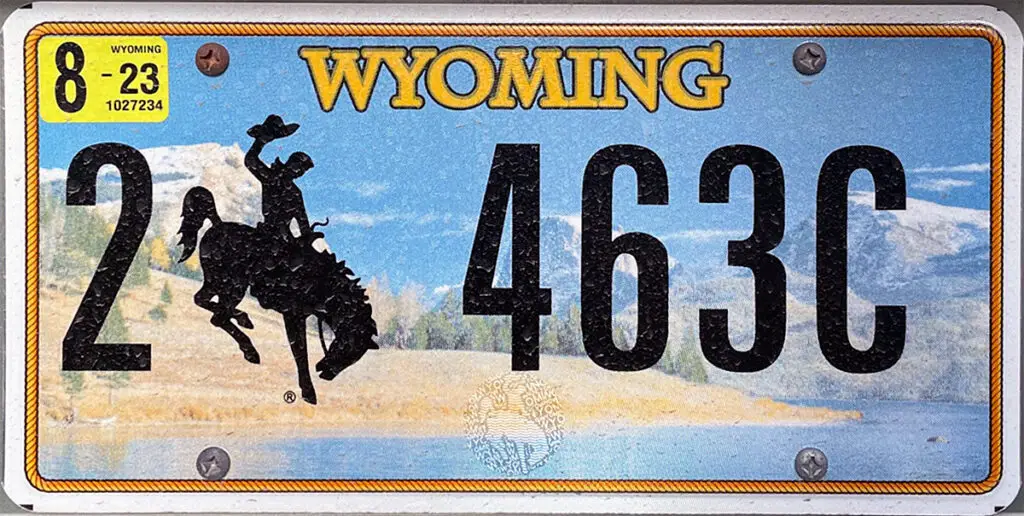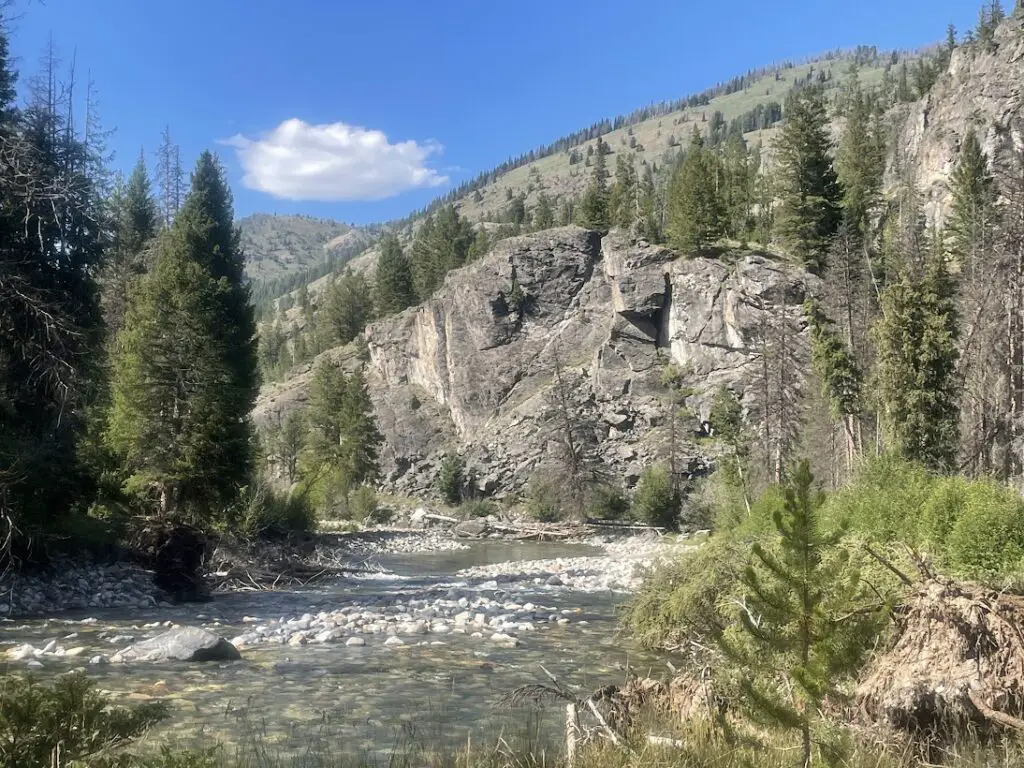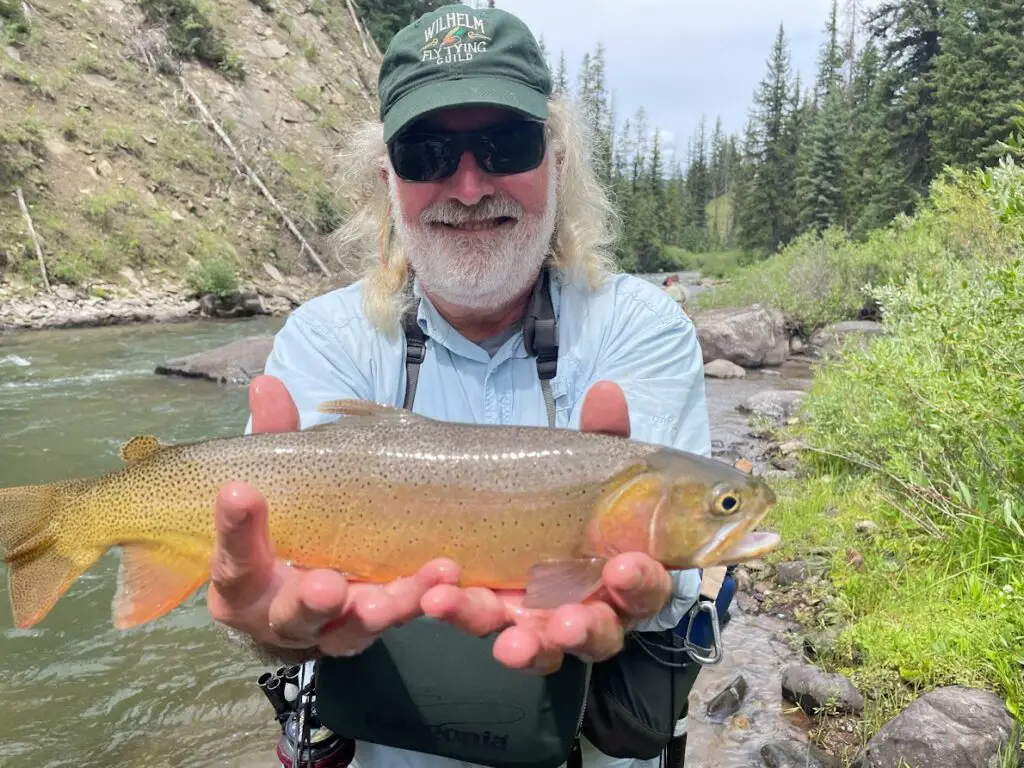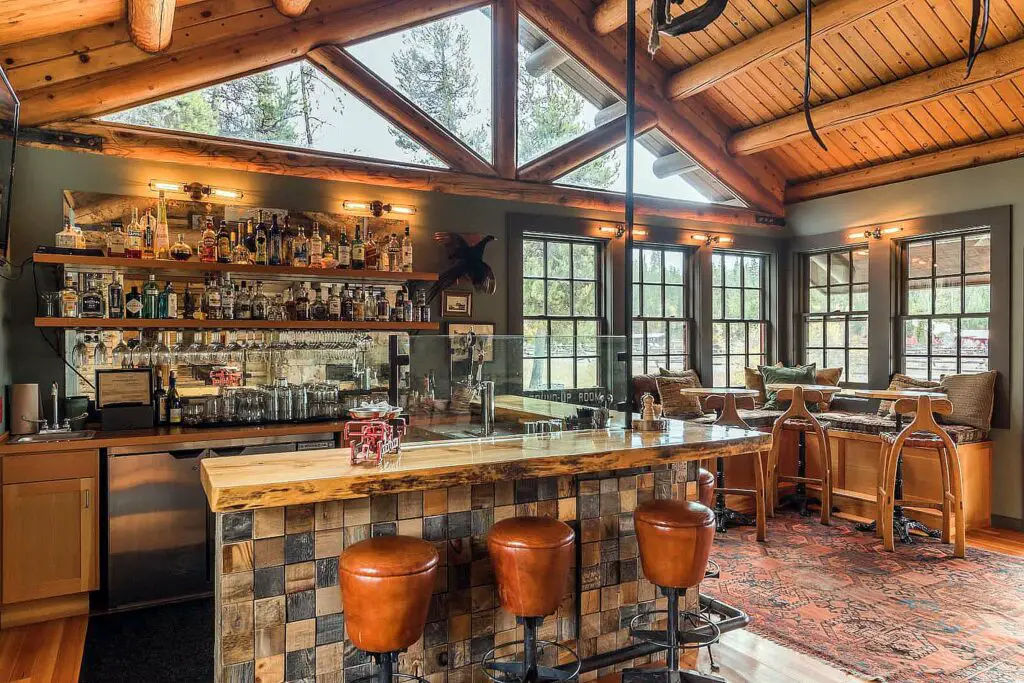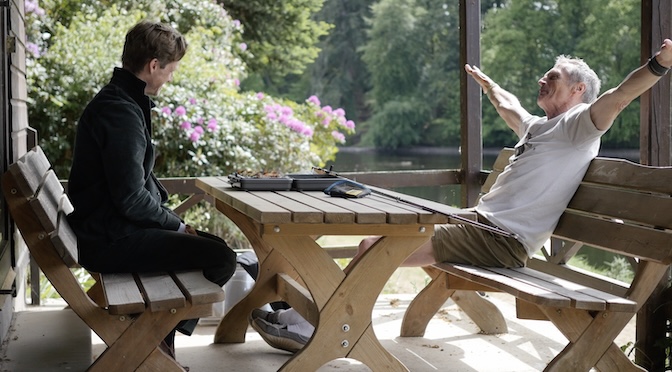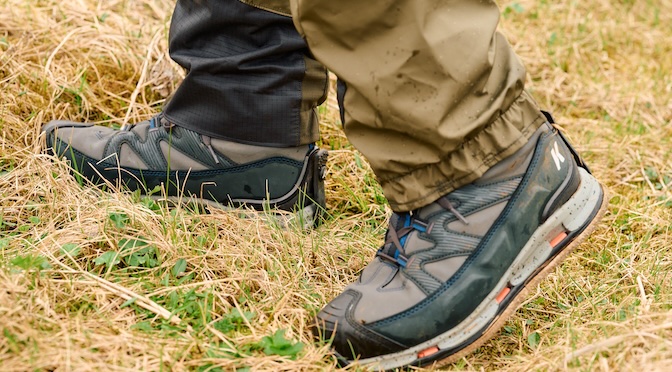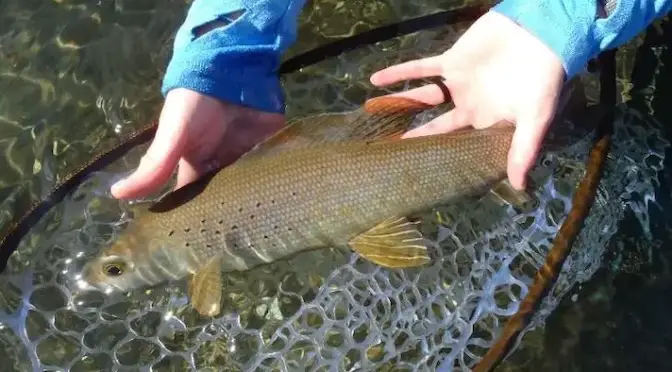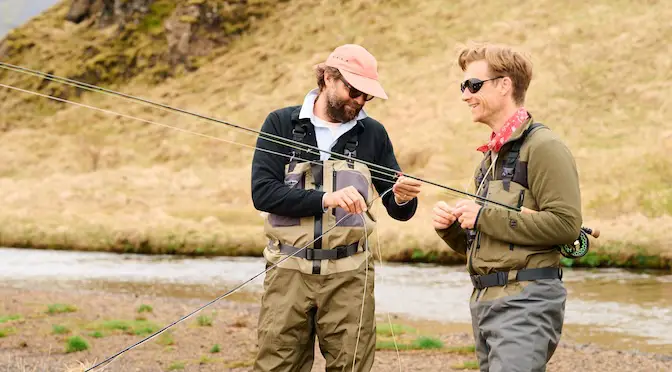Last updated on December 9th, 2024.
- A Historic Reintroduction Takes Shape - May 16, 2025
- Wrangler Duo Key to Wyoming Wilderness Adventure - October 1, 2024
- A Guide to the Best Flies for the Driftless Area - May 6, 2024
If you have ever been to Wyoming, you know you are in “cowboy country”.
You’ll see the state’s iconic license plate featuring a wrangler on a bucking bronco when leaving the Jackson Hole airport.
In 1936 the state of Wyoming trademarked the image of a bucking bronco it had been using since 1918 as a symbol of being the “Cowboy State.”
I had always been enamored of a wilderness backcountry fishing and camping trip on horseback.
So I was more than game to saddle up for my first horseback experience on a family vacation to Yellowstone Park and the Grand Tetons 20 years ago. However, the two-hour scenic trip with my son and nephew through Teton National Park left me saddle sore and less enthusiastic to ever doing it again.
That is, until I saw fly fishing guide Jay Allen’s presentation on “Yellowstone’s Hidden Gems” at our Chicago Trout Unlimited chapter meeting. For 20 summers, Allen was the featured guide at the Turpin Meadow Ranch where he established their fly fishing program for guests.
The spectacular scenery and solitude featured in Jay’s Teton wilderness backcountry trip fishing the Buffalo Fork of the Snake River set the hook literally on my sign-up for this new fly fishing adventure with only one hitch: everyone in my group would be riding four hours by horseback to our camp site and two hours roundtrip each day to our different fishing spots.
What’s a Wrangler?
Our first exposure to the word “wrangler” was probably the purchase of a pair of Wrangler denim jeans. The iconic brand was launched in 1947 as a western lifestyle apparel company.
However, a wrangler by definition is a person responsible for livestock such as horses and cattle. If you are a fan of the TV series “Yellowstone”, then you can relate to these modern-day “cowboys” or wranglers and their daily interactions with horses and cattle.
At the Turpin Meadow Ranch in Wyoming’s Teton wilderness area, the married wrangler duo of Aaron and Elee Deshu are responsible for 40-plus horses and mules and are the key to a memorable (and comfortable) backcountry fly fishing horseback and camping adventure.
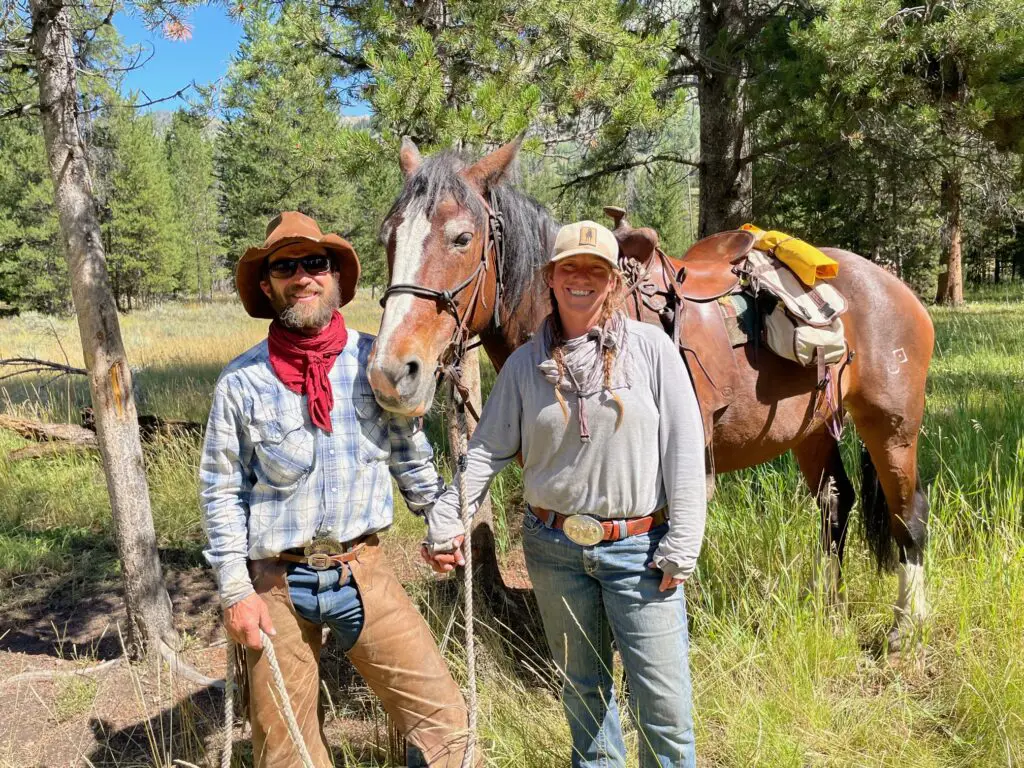
Aaron and Elee just concluded their eleventh year working at Turpin Meadow Ranch which features two distinct seasons. The summer season commences in June with the arrival of 40 horses and mules from a leasing ranch for use on backcountry pack trips and daily trail rides by guests, and concludes at the end of September. After a couple of months of downtime and various chores, the ranch re-opens in mid-December for a three-month winter session which features over 300 inches of snow and transforms the ranch into a Nordic center with groomed cross country ski trails, ski lessons and snowshoe tours. The ranch also offers snowmobile tours and rentals to explore the trails on Togwotee Mountain.
Aaron and Elee have been married 14 years and met when they crossed paths—or literally trails—in 2007 while both were working for the Bridger-Teton National Forest on two different trail crews. Elee graduated from Northern Michigan University and Aaron from the University of Missouri where he majored in fish and wildlife management.
Horses had always been a part of Elee’s life. She grew up riding in Minnesota and trained in dressage—which is a form of horse riding performed in exhibitions and competitions. Aaron came to appreciate horses in 2001 when he started working at the Blackrock Ranger District which is comprised mostly of the Teton Wilderness area bordering Grand Teton and Yellowstone National Parks. Horses and mules were used by the Teton Wilderness rangers and trail crew to take care of the over 500 miles of trails in the Teton Wilderness. Elee honed her western horsemanship skills and learned how to pack mules and horses during her time at Blackrock. In 2014 they both left the Forest Service for the opportunity to run the horse program at Turpin Meadow Ranch. The ranch became their home full time working horses in the summers and helping run the Nordic center in the winters.
Turpin Meadow Ranch
Turpin Meadow Ranch dates back to 1887 when a young and ambitious cowboy and trapper named Dick Turpin built his cabin on these pristine lands. Drawn by the allure of unspoiled wilderness and abundant opportunities, he established a haven for weary travelers and aspiring ranchers alike.
Today Turpin Meadow Ranch lies in the heart of one of the largest national forests in the United States: the Bridger-Teton National Forest which encompasses approximately 3.4 million acres of stunning natural landscapes. The ranch rises more than 6,900 feet above sea level and offers unmatched scenic views of the Grand Tetons.
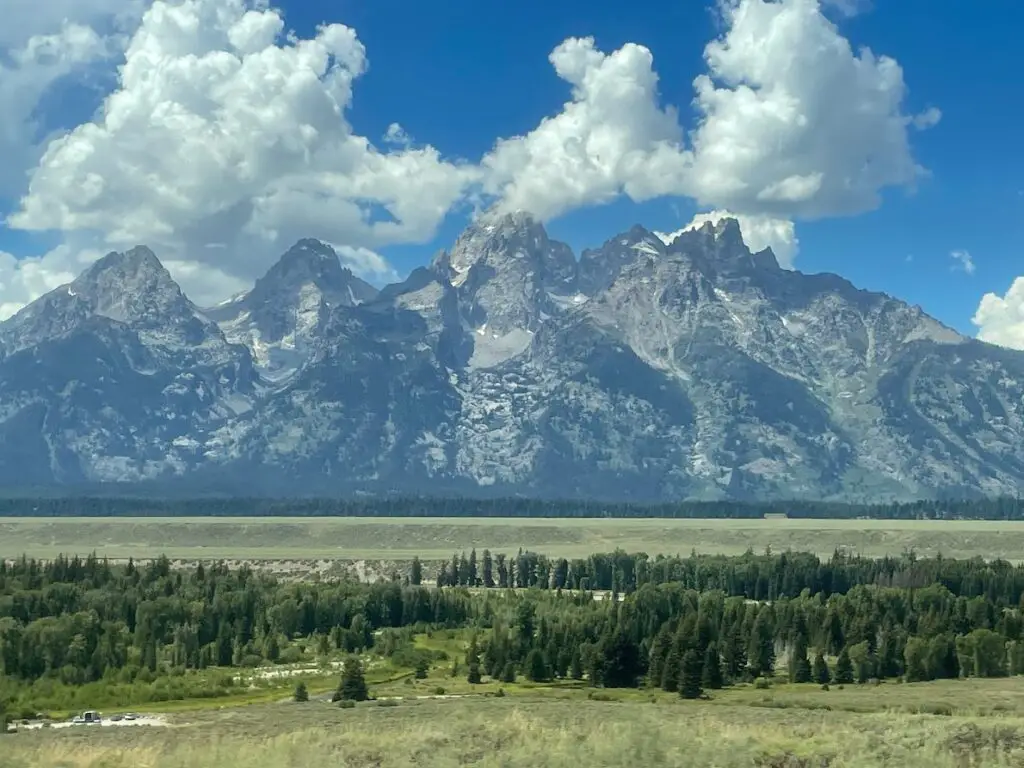
The Bridger-Teton National Forest is named after Jim Bridger, a renowned mountain man, and the Teton Mountain Range, which dominates the eastern portion of the forest. The Bridger-Teton National Forest is best known for its picturesque beauty, towering mountain peaks, deep valleys, pristine alpine lakes, and lush meadows. It offers visitors a wide range of recreational activities and a chance to experience the untamed wilderness of the American West.
A direct extension of Yellowstone National Park’s ecosystem, the Bridger-Teton 584,781-acre wilderness area is the second largest of its kind in the lower 48 states and encompasses some of the very best backcountry fly fishing and wildlife viewing in the Rocky Mountains.
Wilderness areas are set aside to be tracts of land that are untrammeled by humans, where humans are but visitors. Motorized and mechanized equipment is not allowed in wilderness areas and therefore there are no roads—only trails for horses and hikers.
Our group of four anglers flew into Jackson Hole and drove 35 miles to the ranch where we had reserved a cabin for the night preceding our horseback departure the next day. The ranch featured a spacious main lodge with restaurant, bar and outdoor patio which we took advantage of before and after our backcountry trip.
Buffalo Fork of the Snake River
The Buffalo Fork is a tributary of the Snake River, located in the northwestern region of the state of Wyoming. It flows through the Turpin Meadow Ranch and is a significant waterway in the greater Yellowstone ecosystem.
Originating in the Teton Wilderness, which is part of the Bridger-Teton National Forest, the Buffalo Fork River begins its journey in the high mountains of the Absaroka Range. It is formed by the confluence of several smaller streams, including the Slide Lake Outlet and the Thorofare River. From there, it flows southward, cutting through rugged canyons and meandering through wide valley bottoms.
One of the notable features of the Buffalo Fork River is its connection to Yellowstone National Park. The river’s headwaters are located near the southeastern boundary of the park, and it serves as an important corridor for wildlife movement between the park and surrounding areas. The river supports a diverse range of aquatic life, including various species of fish such as cutthroat trout and mountain whitefish.
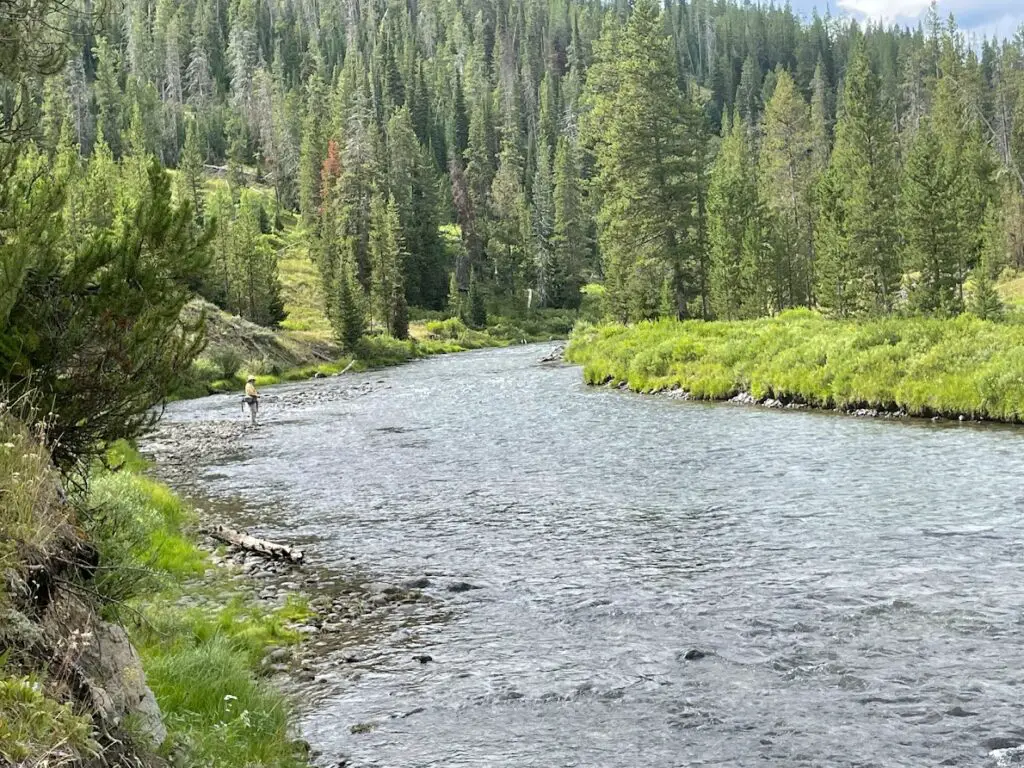
The Buffalo Fork of the Snake River is one of Wyoming’s finest locations for fishing, featuring clear waters that drain the Teton Wilderness. Over 80% of the river is in a wilderness or primitive setting, and has a high degree of natural character. Cutthroat trout that swim from the main fork of the Snake River to the Buffalo Fork typically take up permanent residency there.
Fine Spotted Cutthroat Trout
According to Wyoming Fisheries biologist Diana Miller, the primary cutthroat we pursued go by two interchangeable names—fine-spotted or Snake River cutthroat—and are resident fish. While no documented population trend information is available, Miller characterized the Buffalo Fork cutthroats as “healthy” based on their size and weight.
Like most cutthroat, these fish are primarily opportunistic drift feeders, preying on aquatic and terrestrial invertebrates such as mayflies, stone flies, caddis and terrestrial insects. We caught our cutthroats primarily on Chubby Chernobyls, parachute Adams and parachute Hare’s Ears. We were not fortunate to take advantage of any major hatch activity.
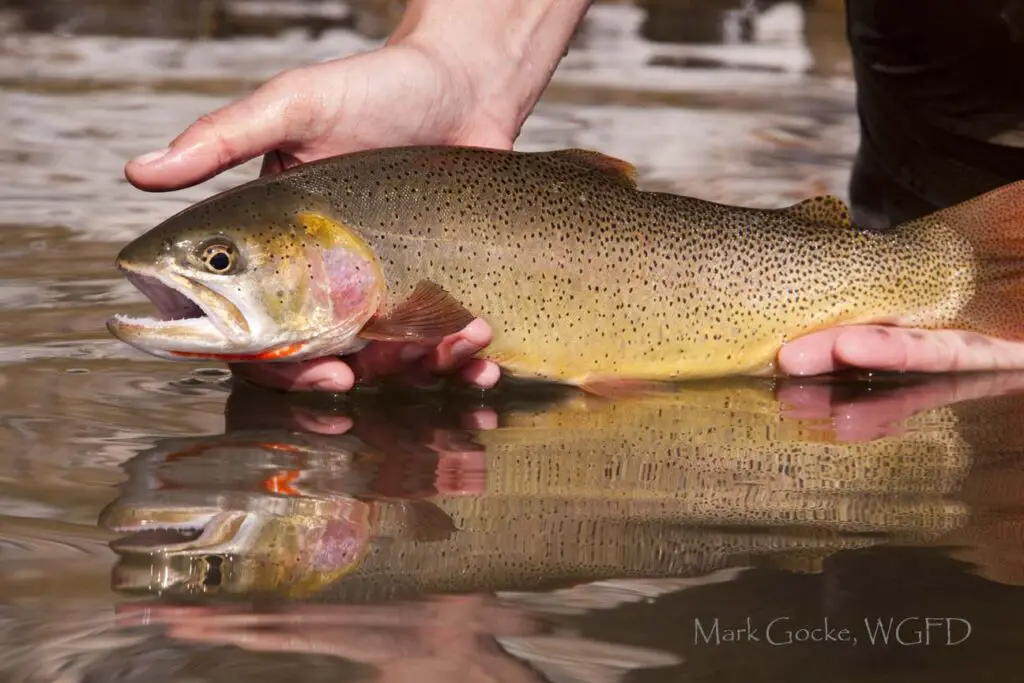
The Snake River fine-spotted cutthroat trout takes its common name from its original habitat— the Snake River of southern Idaho and western Wyoming—and from its unusual pattern of hundreds of small spots that cover most of its body, differing from the larger-spotted Yellowstone cutthroat pattern.
Targeting pure, wild cutthroat in their native habitat does not get much better than this. These indigenous fish do not get much fishing pressure and have a short season to eat a vast majority of their annual food consumption. They are hungry and typically willing to eat visible, large dry flies.
According to guide Jay Allen, we also caught Westslope cutthroats, whose range overlaps northwestern Wyoming and the Buffalo Fork drainage. Westslope cutthroat exist historically and currently in all three oceanic drainages—Pacific, Atlantic, and Arctic. This is unique only to this species of cutthroat which can be found on both sides of the Continental Divide—from Yellowstone National Park into British Columbia and Alberta, Canada.
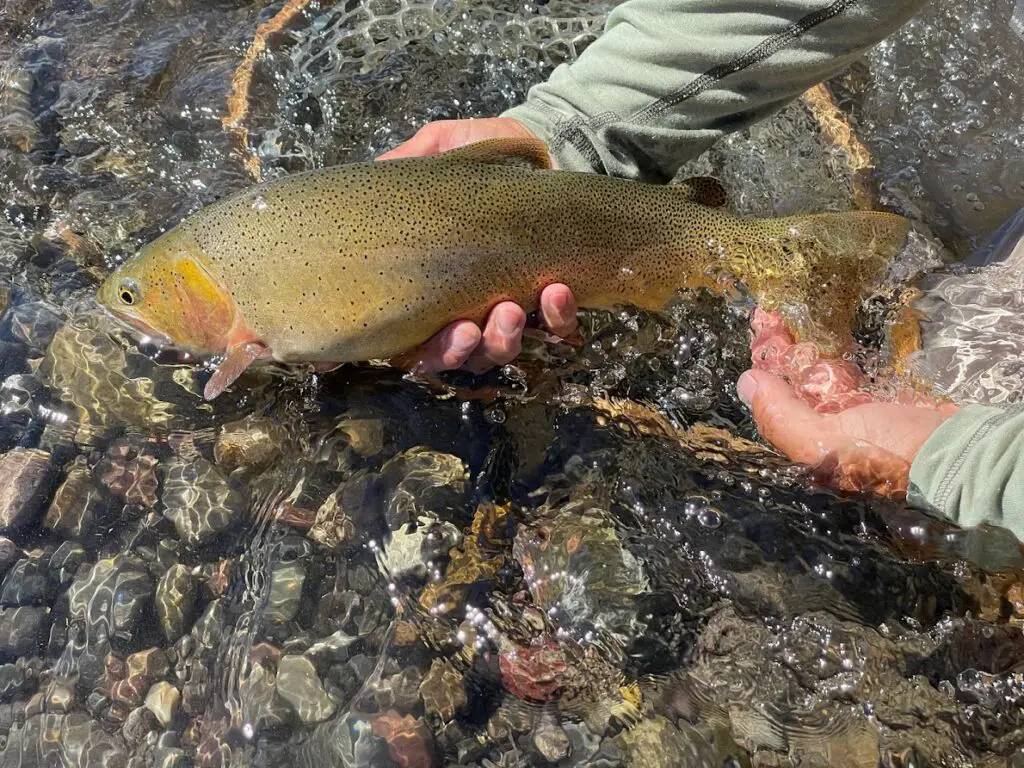


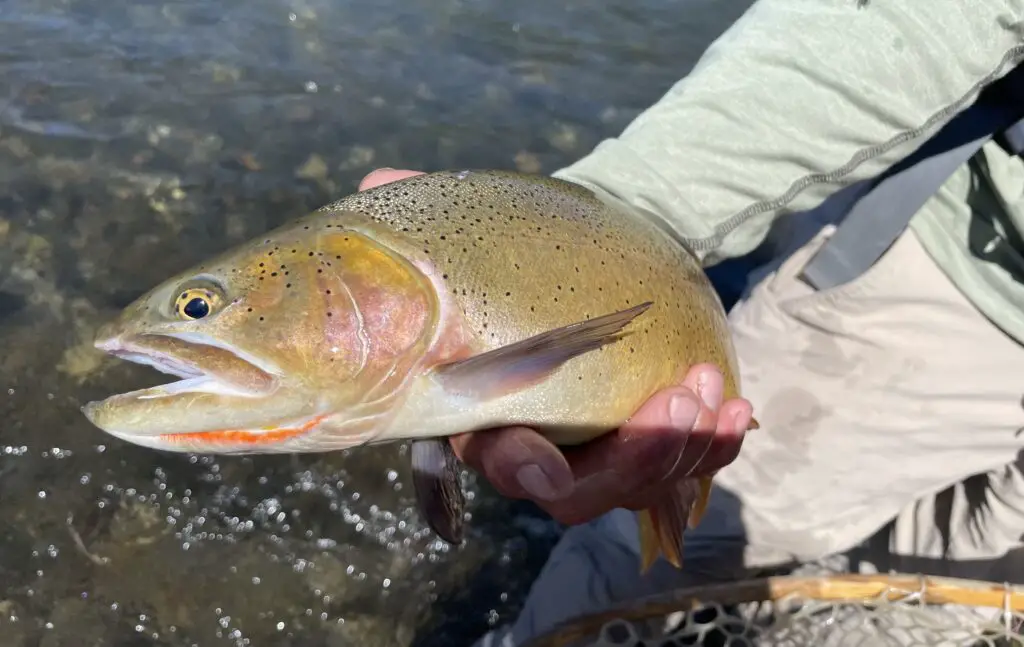
Jay Allen—Mountain Man (and Guide)
Our guide—Jay Allen—resides in Newaygo, Michigan where he runs steelhead and brown trout fly fishing trips on the Muskegon River nine months of the year. For 20 years, he’s spent his summers at Turpin Meadow Ranch exploring the Teton and Yellowstone wilderness areas in a search of “hidden gems” as he calls his secret fishing locations.
Jay developed the original fly fishing programs for the ranch ranging from single-day trips on the front range, to multi-day Buffalo Fork and Thorofare backcountry horseback camping trips. The Thorofare program entails a full-day 26-mile horseback ride to the campsite which is best suited for seasoned riders.
In an ironic twist, Jay is allergic to horses, which means he heads out on foot ahead of the wranglers and anglers on horseback covering the same miles to campsites and fishing locations each day. Needless to say, he’s in great physical shape and has no problem sleeping at night after a long day on his feet.
“I’ve seen probably a dozen bears but no bad encounters in my 20 years in the backcountry,” said Allen. “Usually when they see you, they go the other way. It also helps that Aaron and Elee keep a very clean camp when it comes to food storage.”

Mountain Horses—Wyoming’s Four-legged ATVs
Mountain horses are basically four-legged ATVs. They are sure-footed and willing to cross all sorts of obstacles. These backcountry horses are trained to carry riders and packed gear up and down steep trails that are usually narrow and oftentimes consisting of loose rocks and sandy soil with tight switchbacks and along the edges of steep bluffs overlooking the river below. Fallen timber with 30-inch-diameter trees blocking trails are adroitly high-stepped over one leg—and hoof—at a time. According to Elee, some of their herd of 40 horses are better suited for the backcountry than others and this depends on their personalities, experience, and age.
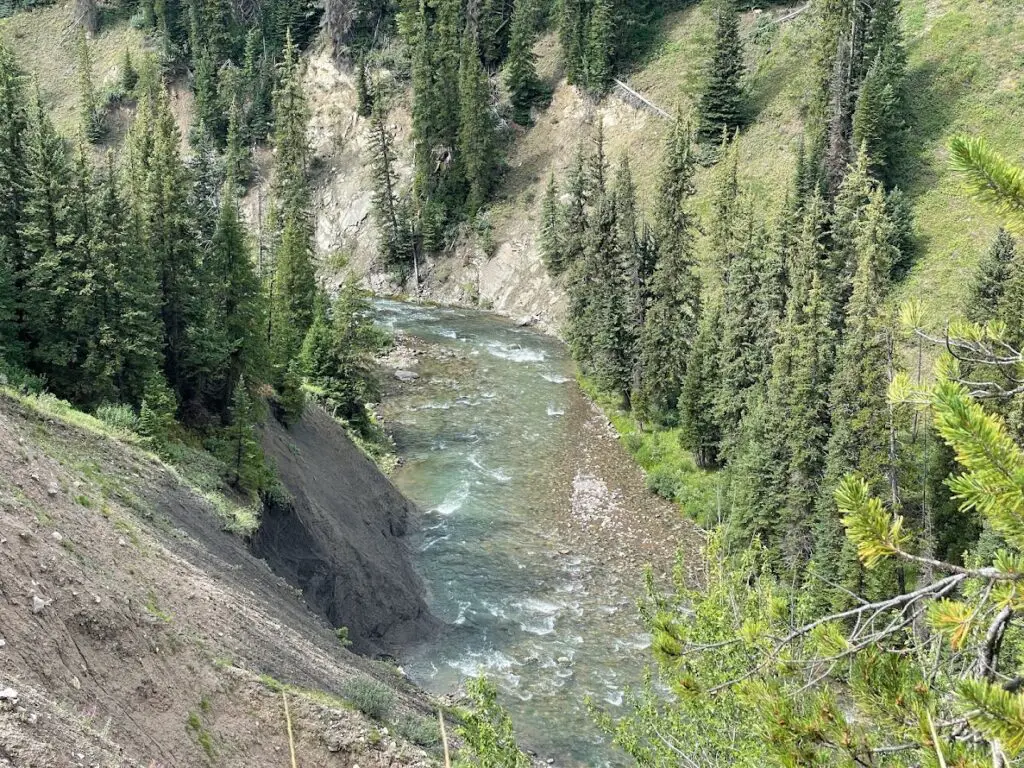

For Aaron and Elee, a typical 18-hour day in the backcountry begins around 5 a.m. with tasks divided between getting the horses ready for the day and preparing breakfast. One wrangler will bring the horses into the highline “corral” from overnight grazing in a meadow adjacent to the campsite and river. Horses are then tied to the highline where they are checked over, brushed and saddled. It takes 60 minutes to saddle up the horses for each day’s trip to the Buffalo Fork. They are given a little supplemental grain to eat so they associate camp with somewhere they want to be.
After the horses return to the campsite with the anglers after a day of fishing, they are returned to the highline while dinner is prepared and the “kitchen” is cleaned up and all scented items are made inaccessible to bears. The horses are then taken back to the meadow where the lead mare and her best friend are placed within an electric fence with enough of an area to graze. The other horses and mules will not leave the lead mare and therefore do not require an enclosure. They are free to graze in the meadow and get a drink of water from the river when they are not sleeping. Horses and mules are not endangered by wolves or grizzly bears which may be in the area. After a nightcap with anglers around a campfire, Aaron and Elee will call it a day around 10 p.m.

Horseback Riding 101—Not a Sore Subject
Our group of four anglers consisted of one experienced horseback rider and three of us with only one prior experience. For me it was definitely an uncomfortable experience while on a Yellowstone Park vacation with my family 20 years ago when I went for a two-hour ride in Teton National Park.
However, thanks to Elee and Aaron, I found both long (four hours) and short (one hour) rides comfortable.
“To avoid soreness from horseback riding it’s great if our guests can spend a little time in the saddle prior to their trip, though that’s not always a possibility,” said Elee. “We wranglers take special care to match our guests with the right horse based on size and experience of the rider. Having your stirrups at the correct length is key to comfort; too long and your bum gets sore, too short and the knees get sore.”
According to Elee, some ranch guests have brought special biking shorts with extra padding to wear while riding and that has seemed to help them stay comfortable. Bottom line: horseback riding is an athletic endeavor that uses muscles in different ways than most people are used to. Consequently, it is ideal to head into a backcountry horse packing trip with strong core strength and some overall flexibility.

The basic “controls” of riding are the rider’s saddle seat, balance, legs, voice, and reins attached to a bridle which includes a metal bit in the horse’s mouth. Reins are used to steer and slow the horse.
A rider’s legs are used to encourage and direct movement. Both legs applied at the same time, squeezing against the horse’s sides, say “please go forward” or “go forward faster”. One leg pressing on one side says “please move laterally”. Depending on the position of the leg, forward, middle, or back of the range allowed by the stirrup, you might be asking the horse to turn on its hind end, bend the body or turn on the front end.
“The way you ‘sit’ on the horse affects the dynamic balance which influences the horse’s balance and speed,” said Elee. “You’re not really sitting in the sense of sitting in a chair. You should be carrying your weight through your hips, thighs, and stirrups—not sitting on your dead butt.”
We were instructed to lean forward on the saddle when the horse was climbing up a steep incline and to lean back when descending a steep trail to better center our weight. And definitely not lean to the left when traversing a trail with a steep canyon drop-off on the right side—which I had a habit of doing.
Equine Education and Lexicon
Social structure: Horses are known for their intelligence and complex social systems and have tight family bonds. It was interesting to see my horse’s reaction when we stopped at our campsite on our way back to the ranch after Aaron had packed up everything and dismantled the “highline corral”. Upon seeing that the rest of the pack horses and mules were gone, my horse became visibly upset and commenced neighing as she called out to her missing friends.
“Horses are very social creatures,” said Elee. “All of us wranglers love watching the interactions in the herd. Some horses are very close while others become frien-emies. Like most social situations, there are critters that get along really well and those that they try to avoid. There is a social hierarchy to each herd and when new horses are introduced, they have to figure out where they fit in.”

Diet: Horses weigh between 900 and 1200 pounds and typically eat about 25 pounds of hay or 2.5 pounds per 100 pounds of body weight. My horse enjoyed grabbing snacks of wildflowers whenever we took trails through mountain meadows. They can carry typically 20 percent of their body weight in gear as a pack animal or riders.
Bears: “I have been very close to grizzly bears and my horse hasn’t cared, but the scent of an unseen grizzly or a squirrel in an unexpected place? That can be cause for an upset horse,” said Elee. “Generally speaking, there is very little danger to the horses from bears. Bears are pretty lazy and they don’t like to hunt big animals. They’d rather feed on something that is already dead or very easy to take down like elk or mule deer fawns or an injured animal. Wolves can be a threat, but our horses are very well protected in that they can run away from an attack. All wild animals are trying to survive, so wolves will calculate whether they’ve actually got a chance to take a horse (or elk or moose) down. Horses, mules and donkeys are fight or flight animals with hooves that can do some real damage in a fight. However, if they can run away (flight) they’ve got a real chance at survival. Again, if a horse is injured, ill or old they will be more vulnerable to predators. Interestingly, mules and donkeys are very protective and we’ve actually had a mule chase a bear that was clear on the other side of the meadow minding its own business.”
Saddle up: The primary saddle components a rider needs to be familiar with are the horn, reins, saddle seat, stirrup, and saddle bags (for storing personal items). It takes about 10 minutes to saddle up each horse each day before heading out for a day of fishing.

Gear to Bring
We were told to bring 4wt and 5wt 9-foot rod and reel outfits with floating line. I brought both but used my 4wt outfit because most banks and canyon pocket water required short casts.
According to Jay Allen, the most consistent fly patterns year-to-year is the parachute Hare’s Ear, Parachute Adams and Chubby Chernobyls. Everyone needed a shoulder or backpack to carry each day’s lunch, filtration water bottle, fly box, and bear spray. While the Buffalo Fork was not very deep, I used a wading staff for the many freestone river crossings each day. Because we were wet wading and doing some hiking, wading pants and boots with good traction were needed.
While cowboy boots were recommended for all horseback rides for ease of getting in and out of stirrups, I chose to wear my wading boots versus having to pack them each day.
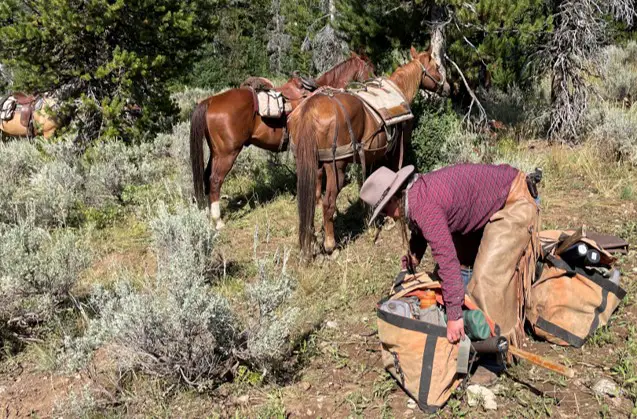
Camp Cuisine
Gabe was our third wrangler and designated camp cook who did a great job preparing daily breakfast and dinner over an open fire.
Our breakfasts included scrambled egg, hash brown and sausage burritos; toasted bagels with smoked/cooked salmon, cream cheese and fixings; and eggs benedict in a cast iron dutch oven pot.
Dinners featured grilled ribeye steak, chicken marsala and fish tacos. For lunch, we prepared our own sandwiches which we packed along with chips and fruit.
One evening, Elee made a wild strawberry cobbler from berries she had picked that day. Elee says she has never encountered bears in the berry patch while picking huckleberries, gooseberries and strawberries.
Prior to leaving the ranch on horseback, anglers were able to purchase soft drinks, beer, wine and spirits which were transported along with personal gear for evening consumption.
Sleeping Arrangements
Each angler had his own two-person tent to sleep in with sleeping bag and cot provided. We were allowed one bag of personal items including clothing which was transported on a pack horse or mule. For our trip, the campsite was already set up as the Forest Service allows an outfitter like Turpin Meadow Ranch to maintain an active campsite for two consecutive weeks before having to dismantle it.
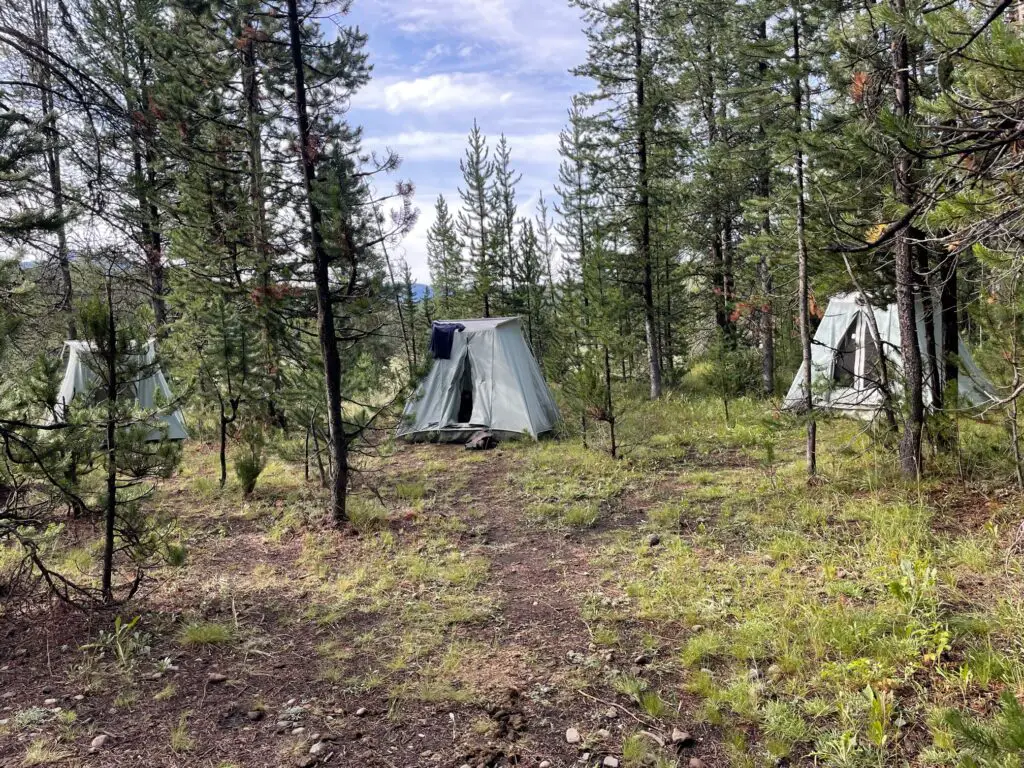
We booked a cabin at the Turpin Meadow Ranch for the nights preceding and after our backcountry trip and enjoyed breakfasts and dinners at the ranch’s main lodge which features a nice bar and outdoor patio.

If you’ve ever had a desire to experience the American West in a wilderness setting on horseback, the Tupin Meadow Ranch may be your ticket to ride.
For More Information: Turpin Meadow Ranch, Moran, Wyoming
For More Information: Worldcast Anglers

